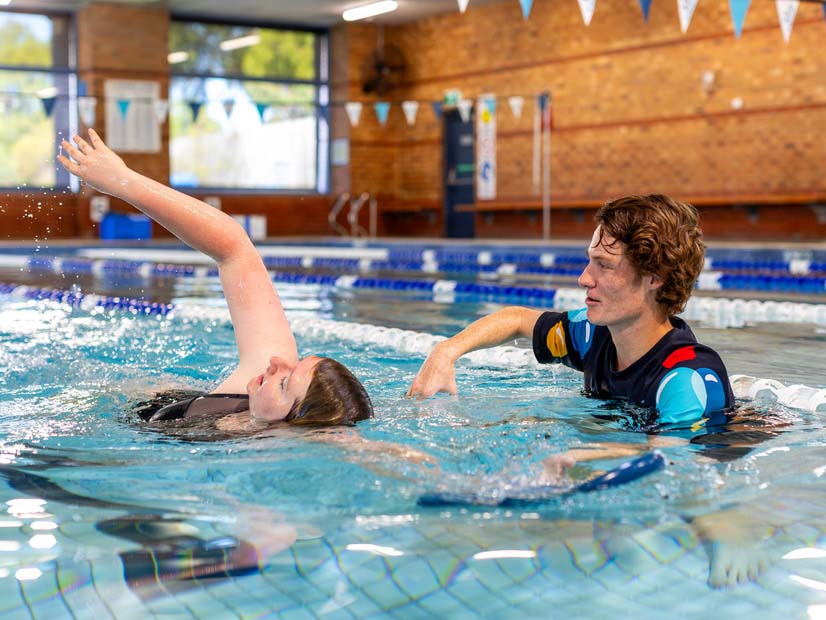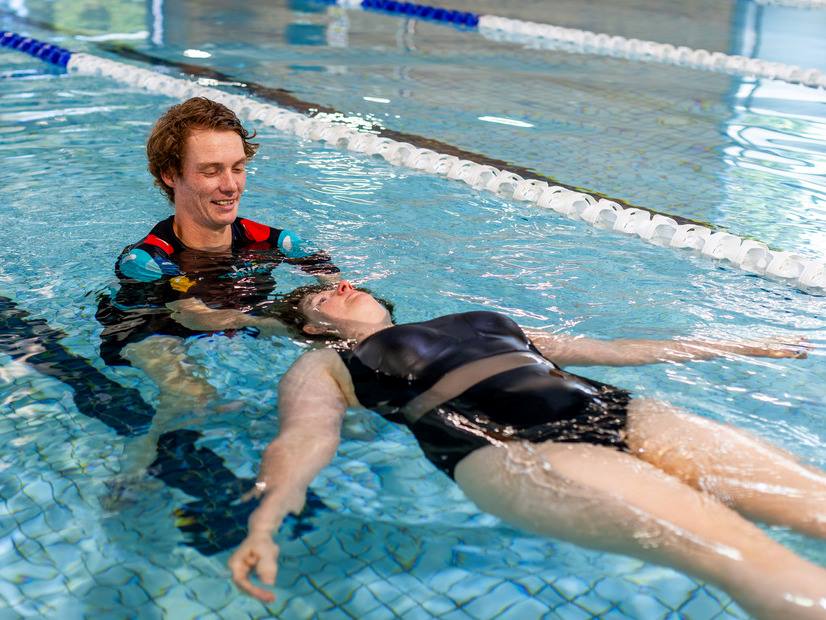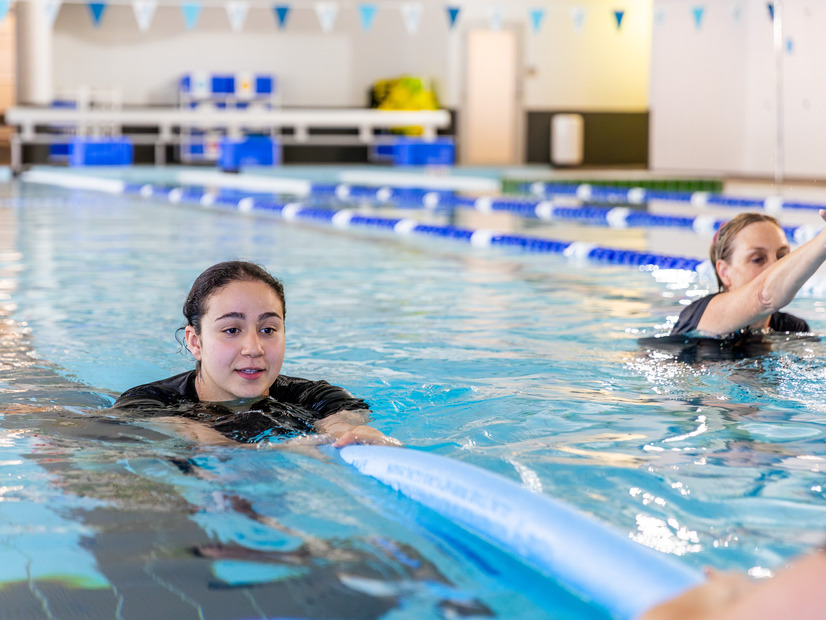A comprehensive guide to learning to swim as an adult
Author: Anne Brown, Head of Program and Performance, Kingswim.
For adults in Australia, swimming is an essential skill, especially with our beautiful beaches, lakes, rivers and love for water activities. It’s never too late to learn to swim and enjoy the water safely and confidently!
Taking swimming lessons as an adult will equip you with these important water safety skills, which will help to keep you and others safer in and around water. Swimming also offers numerous physical, mental and social benefits.
Read on to learn more about the importance of swimming lessons for adults, the stages of learning to swim as an adult, and practical advice to help you start your swimming journey.
Why learn to swim as an adult?
Be safer around water
Sadly, adult drowning deaths have been on the rise over the last 10 years. Royal Life Saving Australia reported that in Australia between 2023 and 2024, adults aged 35 and older accounted for 65% of the 323 drowning deaths.
That is a sobering statistic, but it's important to remember the positive effect learning water safety can have at any age. Initiatives like government funded school swimming lessons, public awareness campaigns and better pool fencing have all contributed to lowering the drowning rate in children. Similarly, adults can lower their risk by learning how to swim and how to be safer in and around the water.
As well as improving water safety, swimming offers a wide range of physical and mental benefits that enhance overall well-being.
Physical and mental health benefits
Swimming is a low-impact, full-body workout that is accessible to people of all fitness levels. Benefits include:
- Physical health: Improves cardiovascular fitness, builds muscle strength and enhances flexibility for a gentle but effective form of exercise.
- Mental health: The breath work and focus required in swimming can help to reduce stress and boost feel-good hormones like endorphins to leave you feeling great.

Stages of learning to swim
1. Float to survive
The first step in learning to swim is mastering the "float to survive" technique. This involves:
- Learning to float on your back to conserve energy.
- Practising treading water to stay afloat in deeper areas.
- Understanding how to orient yourself in water and move towards safety.
Royal Life Saving Australia advocates for this as a foundational skill, stating, "Floating and treading water are critical survival skills that can save lives in an emergency."
Floating also helps to manage panic, giving you time to think clearly and assess your surroundings. However, it’s important to remember that floating to survive is only the first step to being safer in and around water. Building swimming skills, understanding water safety and recognising potential hazards are crucial for staying safer in aquatic environments.
2. Basic swimming strokes
Once you are comfortable floating, the next step is to learn basic swimming strokes:
- Freestyle: The most efficient stroke for covering distances.
- Backstroke: Useful for resting while still moving.
- Breaststroke: A slower stroke that allows for better visibility and control.
- Sidestroke and survival backstroke: These low-energy strokes are ideal for conserving strength and maintaining a stable position in the water, especially in emergency situations.
Practising these swimming strokes builds endurance, helps you move more confidently through the water, and enhances both safety and enjoyment during aquatic activities.

Water safety skills to learn
Swimming lessons are a key part of learning how to stay safe in and around water, but it's just as important to understand essential water safety skills and how to recognise potential hazards.
Rescue skills:
The "reach and rescue" method is a basic lifesaving technique and a safe and effective way to assist someone without putting yourself at risk. This technique involves extending an object such as a pole, stick or even clothing to the person struggling in the water while keeping yourself on stable ground. This method ensures help is provided safely and efficiently and minimises the chance of the rescuer getting into trouble or even drowning while trying to help.
Water safety signs:
Water safety signs provide clear warnings and instructions. For example, they can indicate strong currents, deep water, or areas where it is or is not safe to swim. By following these signs, individuals can avoid hazards and make informed decisions, reducing the risk of drowning or injury. Always pay attention to water safety signs to enjoy water activities safely.
Learn more about water safety for parents and adults.

Practical tips for adult swimming lessons
1. Join a class: Kingswim’s adult swimming lessons for beginners focus on building confidence and skills progressively.
2. Start in a controlled environment: Begin in shallow water and practise floating and returning to a standing position. Gradually progress to deeper water and learning swimming strokes.
3. Practice regularly: Consistency is key. Aim for at least 1-2 sessions per week to reinforce skills and gain confidence in the water.
4. Learn water safety: Familiarise yourself with water safety rules, such as understanding rips at the beach and the importance of swimming between the flags.
5. Seek support: Learning with a friend or family member can make the process more enjoyable and less intimidating.
Long-term benefits of swimming
1. Life-saving skill: Knowing how to swim can save your life and enable you to assist others in emergencies.
2. Social opportunities: Swimming opens doors to social activities like beach outings, pool parties, and water sports.
3. Lifelong fitness: Swimming is a skill you can enjoy and benefit from at any age, making it a sustainable form of exercise.
4. Confidence in water: Whether it’s relaxing on a beach holiday or participating in water-based activities, knowing how to swim will allow you to enjoy these activities safely and with confidence.
Learning to swim as an adult can be incredibly rewarding. By starting with the basics, practising regularly and seeking guidance from highly trained swim teachers, you can overcome any initial apprehension and unlock the lifelong benefits of swimming.
Remember, it’s never too late to learn and every step you take brings you closer to enjoying the water safely and confidently.
If you’re ready to begin your swimming journey, take a look at our swimming lessons for adults and enquire to get started with a free introductory lesson!
